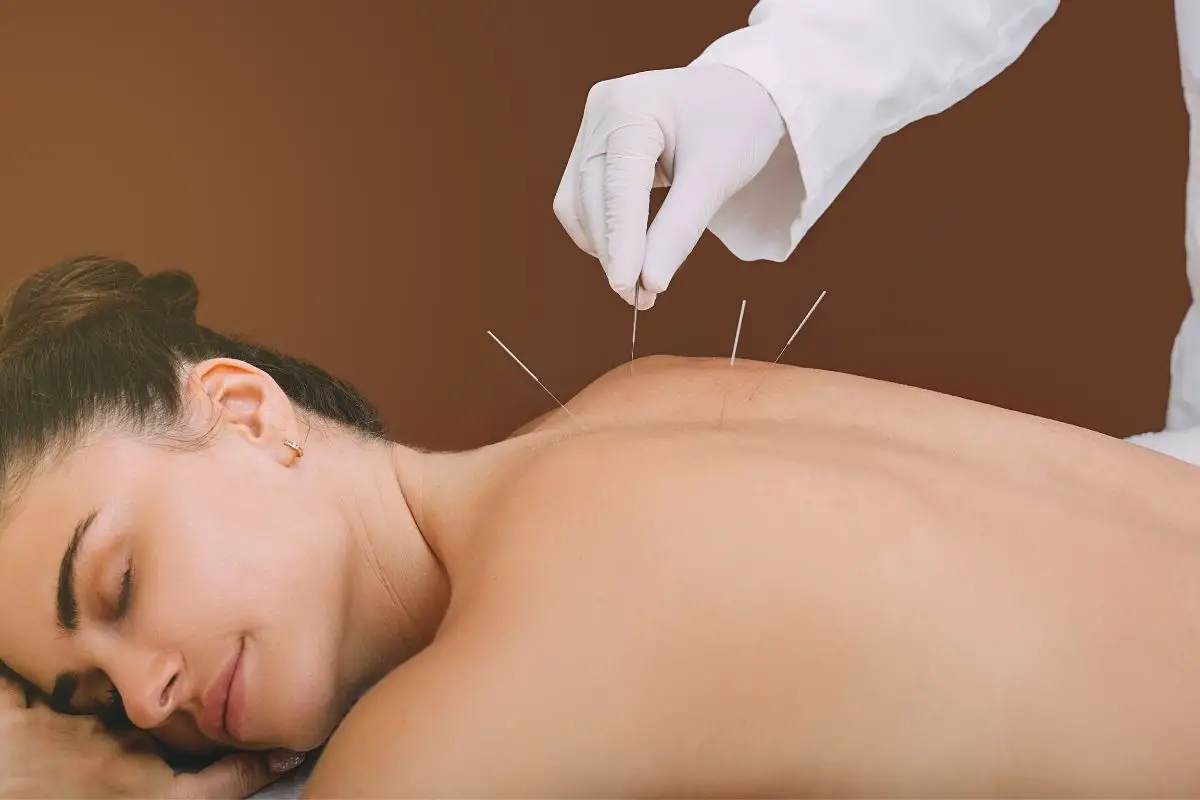Effective Acupressure Points for Tinnitus Relief You Can Use at Work
Tinnitus, a condition characterized by ringing or buzzing in the ears, can be disruptive, especially during work. Fortunately, Traditional Chinese Medicine (TCM) offers effective acupressure techniques that you can use to help manage sudden tinnitus discomfort. We have consulted Ms. Mai Sogawa, a TCM therapist from Japan, to provide guidance on which acupressure points are most effective for managing tinnitus in a work setting. You can read more about Ms. Mai’s background here.
Incorporating these acupressure techniques into your daily routine can promote better ear health, help alleviate stress, and potentially reduce the intensity of tinnitus symptoms over time.
1. Ermen (TE-21)
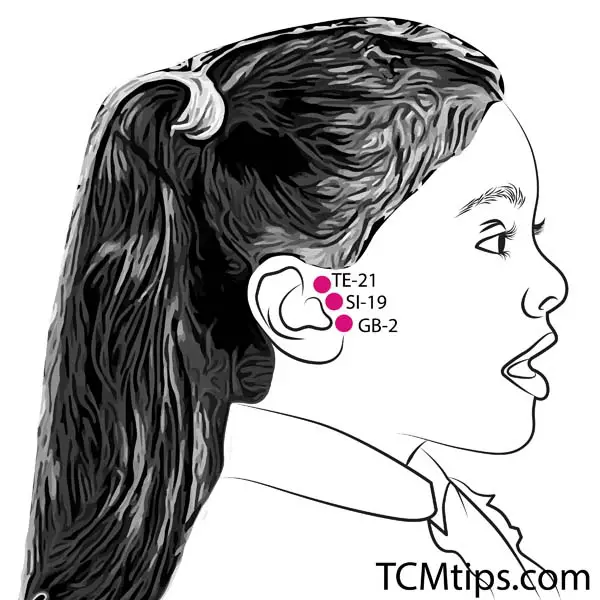
Ermen, also known as TE-21, is located right in front of the ear and helps balance the flow of energy in the ear area. This point is highly effective for alleviating various ear-related issues, including sudden tinnitus or ear congestion. You can find this point by placing your finger in front of your ear, just above the tragus.
- How to apply pressure: Use your index finger to press gently but firmly on the point for about 1 to 2 minutes.
- Benefits: Activating this point can improve blood flow around the ear and reduce ear pain, making it ideal for quick relief during work.
2. Tinggong (SI-19)
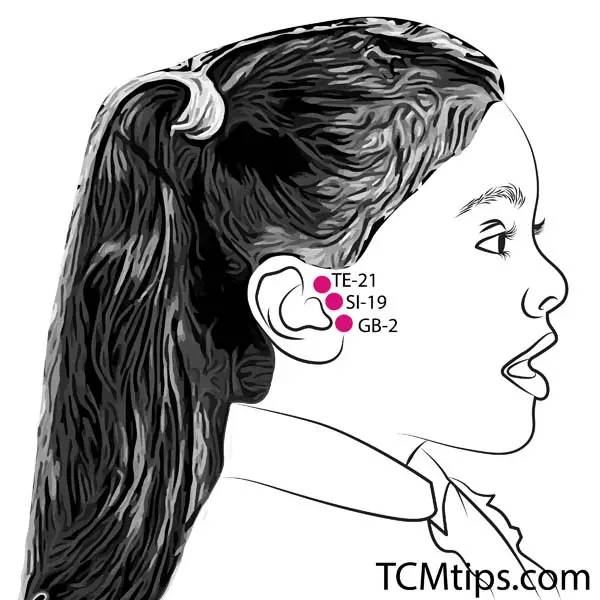
Tinggong, or SI-19, is another acupressure point located near the ear, just in front of the ear canal. It is particularly beneficial for tinnitus, earache, and hearing issues.
- How to apply pressure: Gently press the point with your middle finger for about 30 seconds, then release and repeat on the other ear.
- Benefits: Activating this point enhances auditory perception and reduces the sensation of ear ringing.
3. Wangu (GB-12)
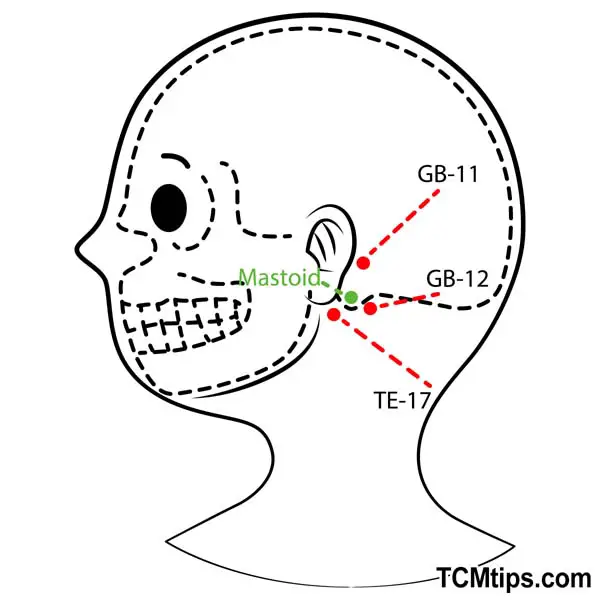
Wangu, also known as GB-12, is located behind the earlobe, where the ear meets the skull. This point is effective for alleviating earaches, tinnitus, and headaches.
- How to apply pressure: Apply gentle pressure using your thumb in a circular motion for about 1 to 2 minutes.
- Benefits: This point helps relax the neck and head muscles, promoting better circulation in the area and reducing the severity of tinnitus symptoms.
4. Jiaosun (TE-20)

Jiaosun, or TE-20, is located above the ear, near the hairline. This point is known for its ability to relieve tinnitus and ear congestion, especially when the symptoms are linked to stress or tension.
- How to apply pressure: Use your index and middle fingers to massage this point with firm pressure for about 1 minute on each side.
- Benefits: Stimulating this point can alleviate tension around the ear and improve energy flow, making it a great option when you feel sudden ear ringing during a busy day.
5. Yifeng (TE-17)
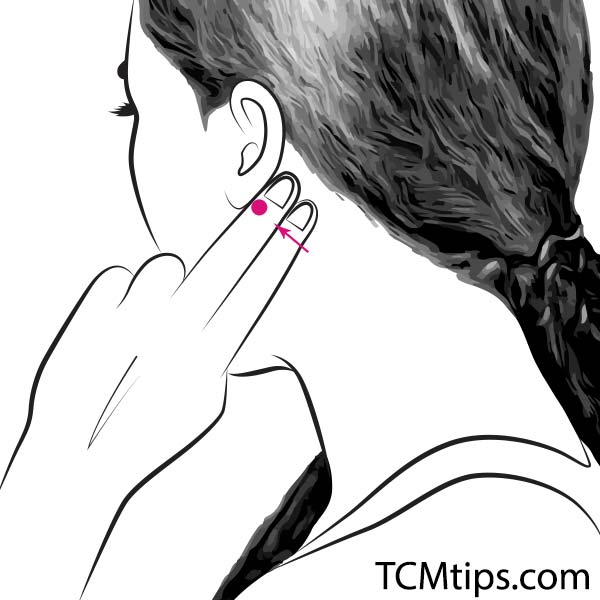
Yifeng, or TE-17, is located behind the earlobe, in the depression between the jawbone and the mastoid process. This point is well-known for treating ear disorders, including tinnitus and vertigo.
- How to apply pressure: Use your index finger to press gently in the depression for 1 to 2 minutes.
- Benefits: Regularly activating this point can help balance ear pressure and reduce tinnitus intensity, making it ideal for daily relief.
6. Taixi (KI-3)
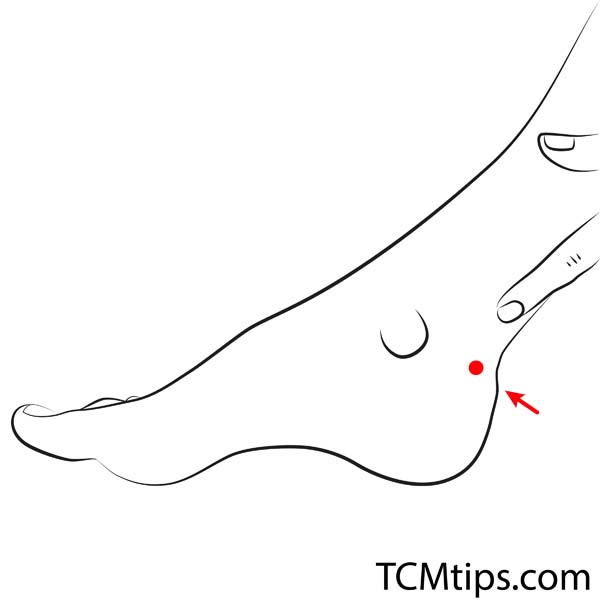
Taixi, or KI-3, is located on the inner side of the ankle, in the depression between the Achilles tendon and the ankle bone. This point is traditionally used to nourish kidney energy, which, according to TCM, is linked to ear health.
- How to apply pressure: Press firmly on this point with your thumb and massage in a circular motion for 1 to 2 minutes.
- Benefits: Activating this point not only supports ear health but also helps alleviate lower back pain and fatigue, making it useful for overall well-being.
7. Zhongzhu (TE-3)
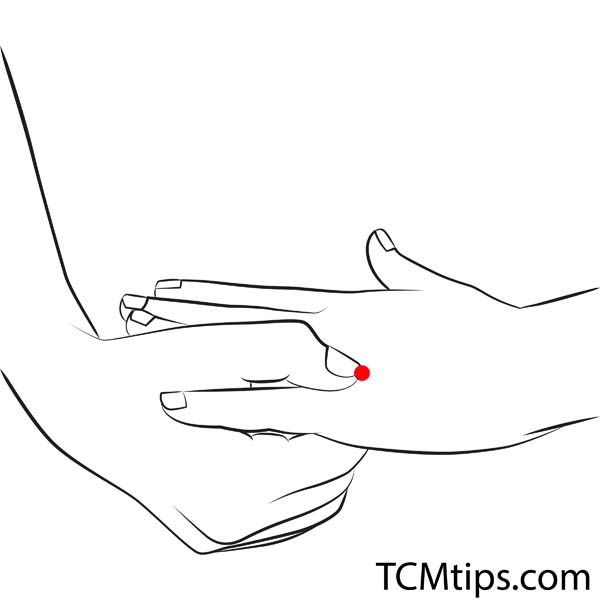
Zhongzhu, or TE-3, is located on the back of the hand, in the depression just behind the knuckles of the fourth and fifth fingers. This point is beneficial for ear disorders and headaches.
- How to apply pressure: Apply gentle pressure to the point with your opposite thumb and massage for 1 to 2 minutes.
- Benefits: Stimulating this point helps reduce the intensity of ear ringing and promotes relaxation.
Tips for Using Acupressure for Tinnitus Relief at Work
While at work, it’s best to perform these acupressure techniques in a discreet manner. Here are some practical tips to consider:
- Start with Gentle Pressure: Always start with light pressure and gradually increase the intensity to avoid over-stimulation.
- Breathe Deeply: Take deep breaths while applying pressure to the points. This helps relax the body and improves the effectiveness of the acupressure.
- Stay Consistent: Regular use of acupressure can lead to better results over time, so try to include these techniques in your daily routine.
By using these acupressure points, you can effectively manage sudden tinnitus episodes during work and promote better ear health overall. Remember to consult a healthcare professional if your symptoms persist or worsen, as these techniques are best used as a complementary approach to medical treatment.
For more guidance on TCM and wellness practices, visit our TCMTips website!

Try our Anti-Aging Gua Sha Tool designed to bring out your skin’s natural glow.
Best Gua Sha Product- Anti-Aging: The tool is designed to target 11 specific aging signs such as wrinkles and sagging skin. By following the 7-step routine, users can improve skin firmness and reduce fine lines naturally.
- Enhances Skincare Routine: It works effectively with serums and lotions, boosting absorption and efficacy of skincare products.
- Visible Skin Improvement: Users can expect a smoother complexion, reduced puffiness, and a more youthful appearance.
 P. Sze
P. Sze 



